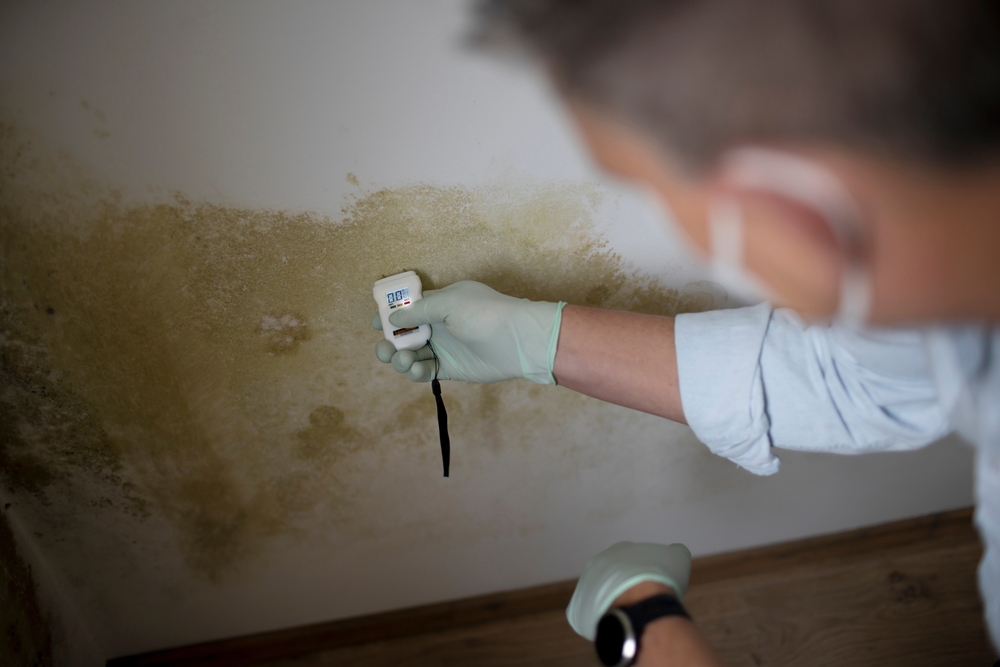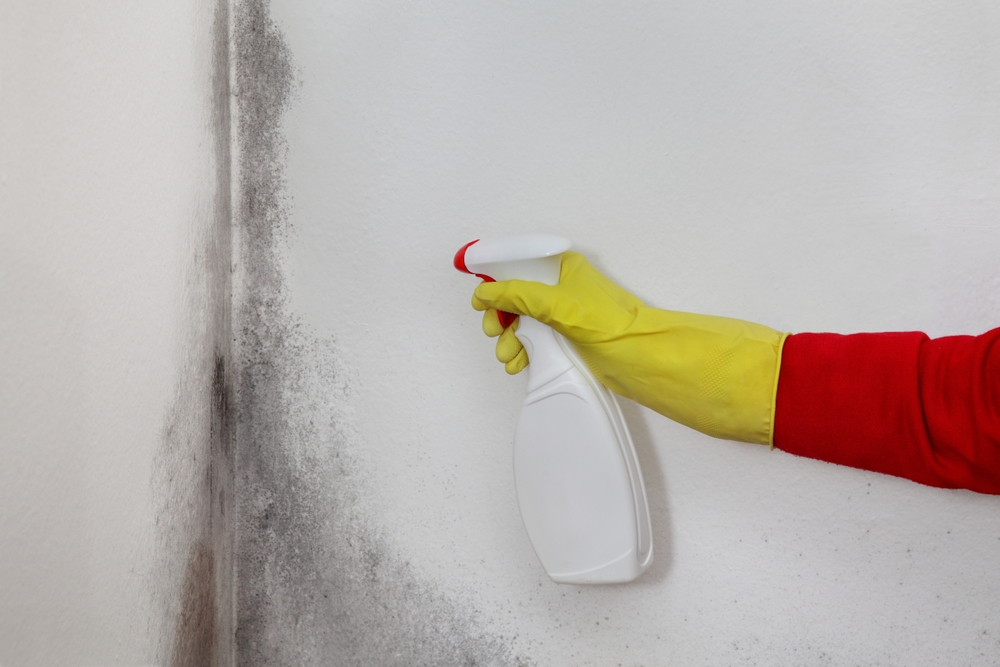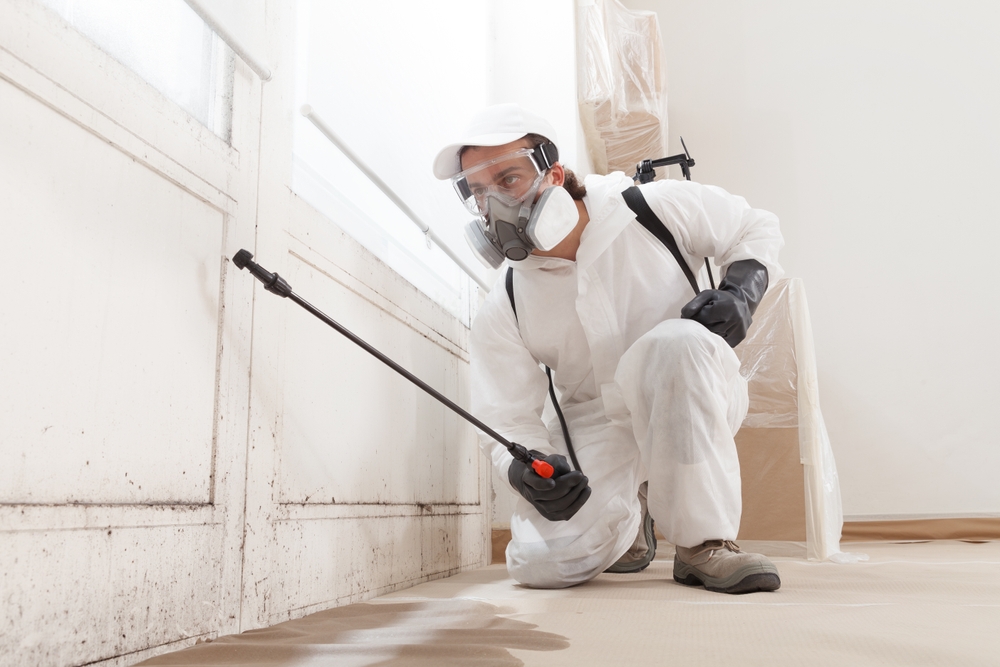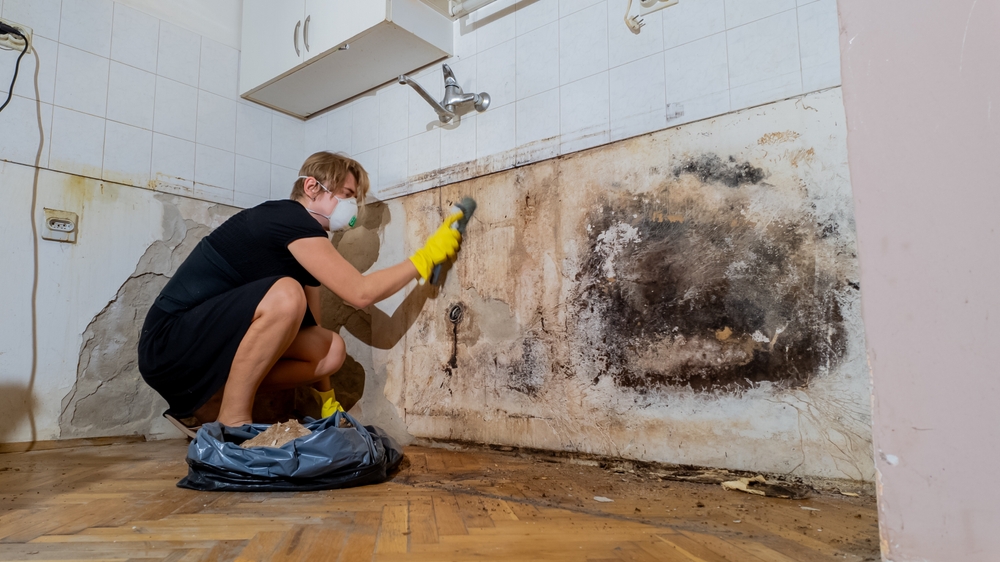Imagine finding damp walls, discolored ceilings, and a musty smell in the air when you go home following a significant downpour. At first, water damage may seem like a small annoyance, but if left uncontrolled it provides ideal environment for mold to flourish. One kind of fungus that reproduces by releasing microscopic spores into the air is mold; these spores can rapidly turn a minor leak into a major outbreak. This tutorial covers the hazards water damage causes, how water damage can lead to mold infestations, and how you might avoid and fix these problems.
Introduction
Water damage can strike quickly—a busted pipe, a roof leak, even fog in poorly ventilated spaces. Usually seeping into secret areas behind walls or under floors, water finds its way into your house. Though you might not notice any damage right away, that latent moisture offers the perfect setting for mold development. Mold can cause health problems like allergies and respiratory problems as well as destroy building materials.
This guide seeks to clarify the clear connection between mold infestations and water damage. We will look at the science underlying mold development, typical causes of water damage, fast development speed of mold, and associated hazards. We will also offer doable preventative advice and a summary of the process for successful correction. Knowing this will help you to keep your family healthy and safeguard your house.

The Science of Mold Growth
What Is Mold?
One kind of fungus that spreads by microscopic spore release is mold. Particularly in areas with wetness, these floating spores land on surfaces. Mold eats organic stuff including fabric, drywall, and wood. Though these spores abound, they require specific circumstances to begin growing.
Essential Conditions for Mold Growth
Four must be present if mold is to flourish:
- Moisture: Water is absolutely vital; without it, mold spores lie inactive.
- Organic Material: Mold finds food in organic things including wood, paper, and dust.
- Temperature: Mold thrives at room temperature—that is, between 60°F and 80°F.
- Time: In a damp atmosphere, mold can start to grow in 24 to 48 hours.
Water damage meets these criteria and easily allows mold to grow in your house by bringing too much moisture there.
Common Sources of Water Damage Leading to Mold
First step in avoiding mold infestations is knowing where water damage originates.
- Plumbing Leaks: Small leaks from pipes, faucets, toilets, or water heaters can go unnoticed, especially if they are hidden behind walls or under floors. Even a slow drip, when left unattended, can saturate materials and set the stage for mold.
- Roof Leaks: Whether from broken skylights, fractured flashing, or missing shingles, a damaged roof can let precipitation flood your attic and walls. Many times, roof leaks cause difficult-to-find water damage until mold starts to form.
- Flooding: Widespread water damage can result from floods—from natural events or busted pipes. Perfect for mold development, floodwater often contains toxins and leaves behind high moisture levels.
- Condensation: Condensation in places such bathrooms, kitchens, and basements can result from inadequate ventilation there. Condensation’s moisture builds up on surfaces and inside concealed areas over time, encouraging mold growth.
- Foundation Cracks: Foundation cracks in your house let water to flow in from below. Particularly at danger are basements and crawl spaces since ongoing dampness in these regions can cause mold problems.
The Progression: From Water Damage to Mold Infestation
Water damage and mold growth follow a predictable sequence if not addressed promptly.
- Immediate Aftermath: Water first entering your house starts to soak elements including insulation, drywall, and wood. Even if the surface appears dry later, hidden moisture can linger within these materials.
- Moisture Penetration: Porous materials absorb water, providing a wet environment beneath the surface. This retained moisture is a persistent feeding source for mold spores that are already present in the air.
- Rapid Mold Growth: Mold can begin to grow 24 to 48 hours after water contact. You may first smell musty or find little black patches. Growing mold colonies spew more spores into the air, therefore distributing the infestation to other places—including apparently dry ones.
- Hidden Mold: The most harmful mold is the one you cannot see most of the times. Growing behind walls, under carpets, and in crawl spaces, it influences indoor air quality and health before outward symptoms show. If the underlying moisture is not removed, this latent mold can continue for extended lengths of time.

Health Risks Associated with Mold
Mold can cause major health hazards, not only be an ugly annoyance.
Allergic Reactions
Many people suffer with allergies triggered by mold spores. Typical indications include:
- Sneezing and runny nose
- Itchy, watery eyes
- Skin rashes
Respiratory Problems
For those with asthma or chronic bronchitis especially, mold exposure can aggravate respiratory problems. Among the symptoms could be:
- Coughing and wheezing
- Shortness of breath
- Chest tightness
Irritation and Other Health Effects
When exposed to mold spores, even those without allergies can get irritation of the eyes, nose, and throat. In severe circumstances, long-term mold exposure—especially that of toxic types—may cause more major medical problems.
Vulnerable Groups
From mold infestations, children, the elderly, and those with compromised immune systems especially run danger. For some groups, even a tiny bit of mold can have major effects on health.
Prevention Strategies
Stopping mold growth begins with addressing water damage. These doable actions help to lower your risk:
Regular Inspections
- Routine Checks: Regularly look for leaks and water damage in your house. Particularly pay close attention to spaces behind sinks, beneath cabinets, and in basements.
- Professional Inspections: If your house is older or in a humid environment, especially then think about getting a professional examination.
Proper Ventilation
- Increase Airflow: Make sure basements, kitchens, and bathrooms—where dampness is prone—have good ventilation. To encourage air flow, open windows and run exhaust fans.
- Use Dehumidifiers: Use dehumidifiers to assist keep humidity levels between 30% and 50% in damp environments, therefore preventing mold development.
Prompt Water Damage Mitigation
- Immediate Action: Remove the water and rapidly dry the impacted area at first indications of water damage. Acting early will help to minimize the time mold has to grow.
- Professional Help: To guarantee that all moisture is eliminated for major water damage, think about consulting experts like Philadelphia Restoration Services.
Proper Drainage and Sealing
- Gutters and Downspouts: Downspouts and Gutters Regular gutter cleaning will help to guarantee that water runs away from your house.
- Foundation Repairs: Repair any foundation cracks to stop water from seeping into crawl spaces and basements.
- Waterproofing: Mold can cause major health hazards, not only be an ugly annoyance.

Mold Remediation and Water Damage Restoration
Sometimes water damage results in mold infestations even with good preventative measures. When it occurs, quick fixes are absolutely vital.
When to Call a Professional
- Large Infestations: Professional treatment is required in cases of significant mold coverage or hidden in unreachable areas.
- Health Concerns: See a professional if someone in your house suffers with allergies or respiratory problems.
- Structural Damage: Professionals can guarantee the space is safely restored should water damage compromise structural elements including walls or the subfloor.
The Restoration Process
Usually, professional water damage remediation consists in:
- Water Extraction: Eliminating standing water with industrial-grade equipment is water extraction.
- Drying and Dehumidification: Using high-powered fans and dehumidifiers helps to remove remaining moisture.
- Cleaning and Sanitizing: Sanitizing and cleaning contaminated surfaces will help to prevent mold by means of their thoroughness.
- Inspection: Ensuring no concealed moisture would help to prevent mold development.
The Mold Remediation Process
Usually, mold remediation entails:
- Containment: Sealing off the impacted area will help to stop mold spores from spreading.
- Removal: Eliminating non-cleanable items contaminated with mold calls for careful consideration.
- Cleaning and Disinfection: Killing mold and wiping surfaces using antibacterial treatments.
- Air Purification: Using air scrubbers and HEPA filters will help to clean the air of mold spores.
- Restoration: Repairing and substituting ruined items will help to restore the space.
Stopping mold from reoccurring depends on addressing the moisture, the root cause.
Conclusion
If water damage is not taken care of right once, mold infestations can rapidly follow. Water that finds its way into your house produces a moist atmosphere that molds require. Mold can start to grow within 24 to 48 hours, maybe causing health problems and significant property damage. You can stop mold from spreading by knowing the science behind mold development, identifying typical causes of water damage, and acting early—that is, by scheduling frequent inspections, correct ventilation, and quick repairs.
Professional remediation services may assist guarantee that, should mold develop, it is completely eradicated and that underlying moisture is addressed. Stay alert, act fast, and, where necessary, consult professionals to safeguard your house and your health.
See Philadelphia Restoration Services for complete mold remedial services and water damage restoration. They provide 24/7 emergency response to assist in home restoration and protection of your investment.
Philadelphia Restoration Services
https://www.google.com/maps?cid=3399342399556699153
+1 267 668 0013
https://philadelphiarestorationservices.com/


